Restoring Wonder in The World: An Interview with Daniel Soder

Daniel Soder is a photographer and sculptor based in Atlanta. Influenced by the light and space movement, Daniel’s artistry is both aesthetically and technically executed to ignite wonder, fascination and curiosity in the natural world.
Oftentimes a photo can be oversaturated with misplaced narratives and symbols. A photo can be polarizing and because the infrastructure of social media allows it, most of the time, it is. In this whirlpool of polarity, drama and constant pictorial stimulation, nothing is left untouched by the misguided maximalism that affronts our screens every day. Except Daniel Soder.
Having spent most of his professional career in the advertising and creative industry, Daniel is no stranger to precision. Shifting from advertising to setting up his own creative practice for photography and sculpture is inspiring to say the least. Daniel tells us about how Dirt Productions, the creative network he spearheads, has benefited from his experience in the advertising industry. How ego has no place in creation; how leaving ego out of it opens up space for meaningful collaboration and a more outward-looking approach – pushing invention to the next level, unencumbered.
In his photography, his main subject is light. Acquiring specific optical or light splitting devices from university labs and research institutes, he manipulates his setups to achieve different effects with the lights and colours, capturing these with a camera attached to a digital screen. When it comes to sculpting material objects (as opposed to light), a starkly different process, it is still clear that the very same principles guide Daniel’s creations (both material and immaterial). Although a work of art, photography, sculpture or other can and indeed may have inherent use values and/or symbolic values, the main and most disarming quality of Daniel’s work is its truth value.
Nature, science, physics and geometry are some of the cornerstones of Dirt Productions. This comes as a result of Daniel’s interest in the world we collectively inhabit – an affinity also shared by some of the greatest light and space artists who have produced iconic works and experiences focused on holistic understandings of the world and how we live. If there was such a thing as objective art, then Daniel’s art is it. It takes a team of technically dextrous collaborators to operate some of the equipment that Daniel employs for his work. Equally, Daniel can take up to 1,000 shots for every 1 shot that ends up in the final cut, tweaking and adjusting slightly, yielding entirely different images from 1cm to the next. In creating a space and a practice where art and science, not only coexist, but in the end result blend into one another so fluidly, we are given the chance to see with our own eyes things of nature we wouldn’t otherwise see. To see nature for what it is or for what it is when we aren’t looking is truly a grounding experience in and of itself, but is then infinitely more precious and in fact antidotal in the throes of insularity-inducing phenomena.
In this interview, we talk about Daniel’s career, his inspirations, the value of experimentation, James Turrell and more. Read on for more detailed descriptions of Daniel’s creative process. We also learned that aside from building his house in the mountains of North Carolina with his fiancée, Daniel’s next series in astrophotography is underway.
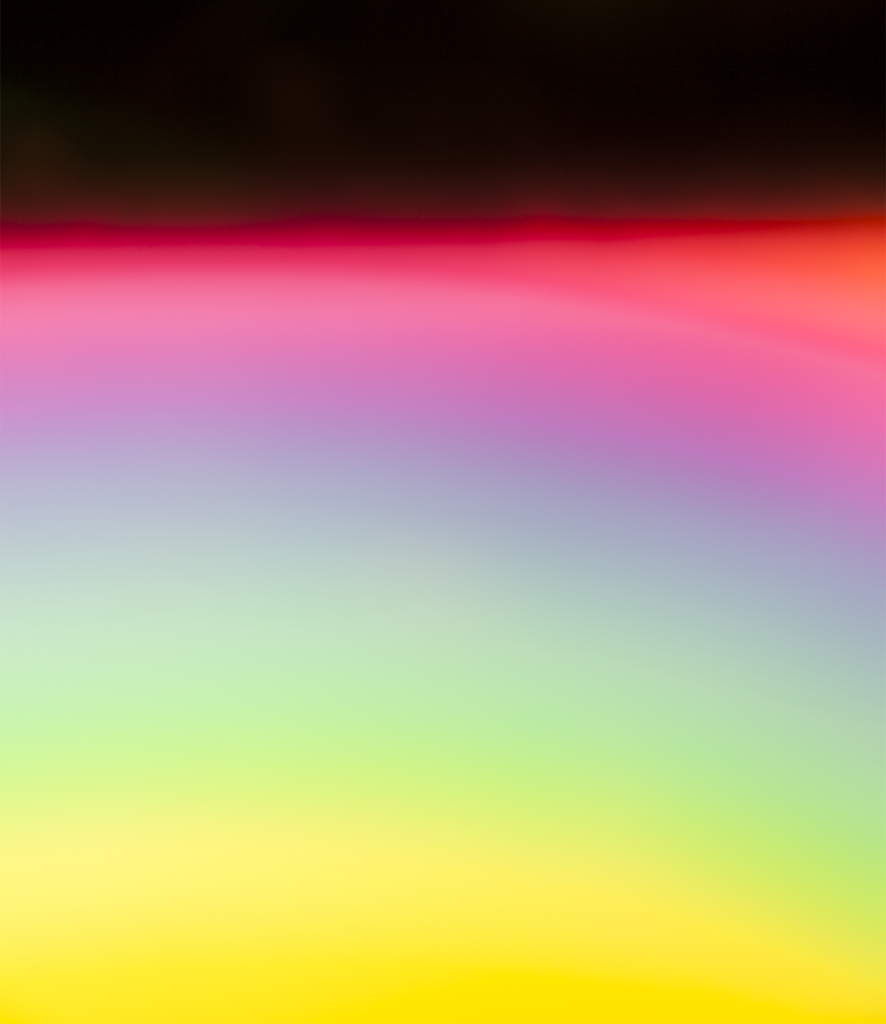
The news is unrelenting, and the pandemic is still thriving. How have you been? How has it affected your creativity/creative production?
I have to confess this year hasn’t been very inspiring. I finished a new body of photographs and sculptures in March right when the pandemic caught fire here in the States. I was excited to share the new work with my gallery and hear their feedback. It had been nearly two years in the making, and I was looking forward to seeing what they thought. Maybe they wouldn’t like it, or maybe I would get some confirmation that every creative person appreciates after being in the studio for so long. I have immense respect for the owner and curators that work there. But everything went to hell and shutdown, and I didn’t have the desire to start on anything new until that work had a chance to live and breathe if even for a small audience. For me there’s a need to punctuate or demarcate the creative process by handing over or letting go of what you’ve produced. It’s less about seeking approval and more about facing my fears and insecurities that come with sharing my personal, creative journey with others. I think it’s healthy albeit awkward at times to put your work out there. I’m not thinking in terms of success or failure at that point. I wouldn’t share it if I didn’t personally feel good about the work. There’s an intimacy intrinsic to the creative process where at some point you need to interface with someone and people and hope your work connects with them. So that didn’t happen this year which was a bummer.
But I did get engaged to my girlfriend in December, and we’re building a house in the North Carolina mountains a couple hours from where we live in Atlanta. That’s the good news. And to answer your question another way, the unrelenting bad news and gravity of this pandemic did reorganize my priorities. I thought a lot more about my relationships and how fun it would be for my fiancé and I to design a house together in the woods.
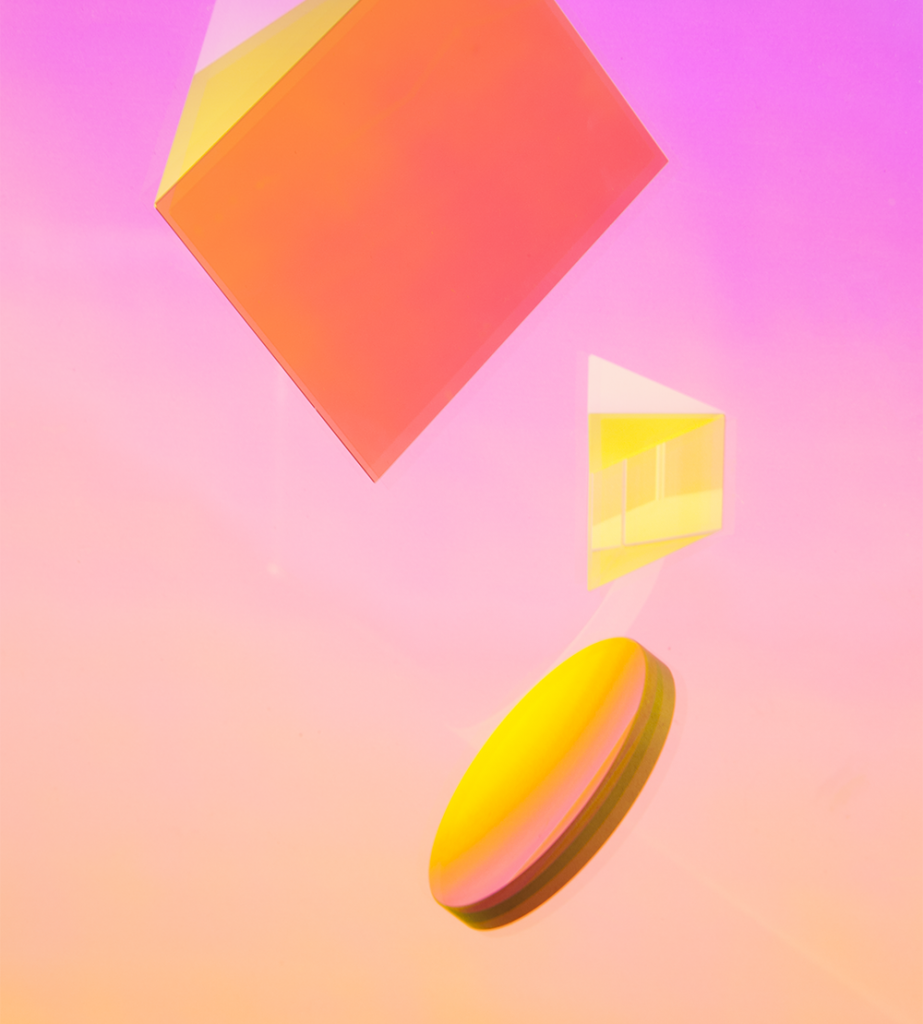
How do you characterize your art practice? Is there a specific message or impact you are trying to evoke?
The core impetus in my art practice is the restoration of wonder and curiosity for natural phenomenon. Recently geologists have begun referring to our current epoch as the Anthropocene, the age in Earth’s history during which human activity is the dominant influence on climate and the environment. It goes without saying that homo sapiens with all of our progress and technology have not learned how to live harmoniously or proportionately with our natural resources. Additionally, within human societies there’s growing inequality and disparity. However, there is much to be hopeful about. If we are to believe Steven Pinker and others the data does show war and violence is decreasing globally and literacy is increasing. Knowledge, reason, and science do still point us toward the possibility for enhancing human flourishing in a broader more equitable, and sustainable way.
I look to art as a means of correcting our current destructive trajectory. At some point, I can’t identify exactly when, I started to move away from representational art, both in terms of what I appreciated and what I wanted to produce. I used to love photojournalism and documentary photography, but its ability to impact me or move me emotionally waned over the years. What I started to marvel at were images from the Hubble Telescope or Henri Becquerel’s eerily beautiful photographic experiments with uranium salts. A world of imagery opened up to me that excluded the portrait, the landscape, the nude or any other preoccupation of human design, and it felt wondrous.
As I pursued this aesthetic I incorporated it into my own art practice. I found my interest into the aesthetics of this kind of photography eventually gave way to a growing curiosity of science, the physics of light, optics, and a general interest in natural phenomena. I began to realize how little I know and how fascinating the world around us is. Paradoxically, the realization was comforting and stoked a fire inside of me to learn more. The general effect was to see science and natural laws as solutions for mankind to respect and benefit from, not tame or dominate. My artistic practice served as a way for me to convey the beauty and awe of Nature. I hope that doesn’t sound pretentious. In the end I just photograph color and light, and hopefully the compositions are appealing.
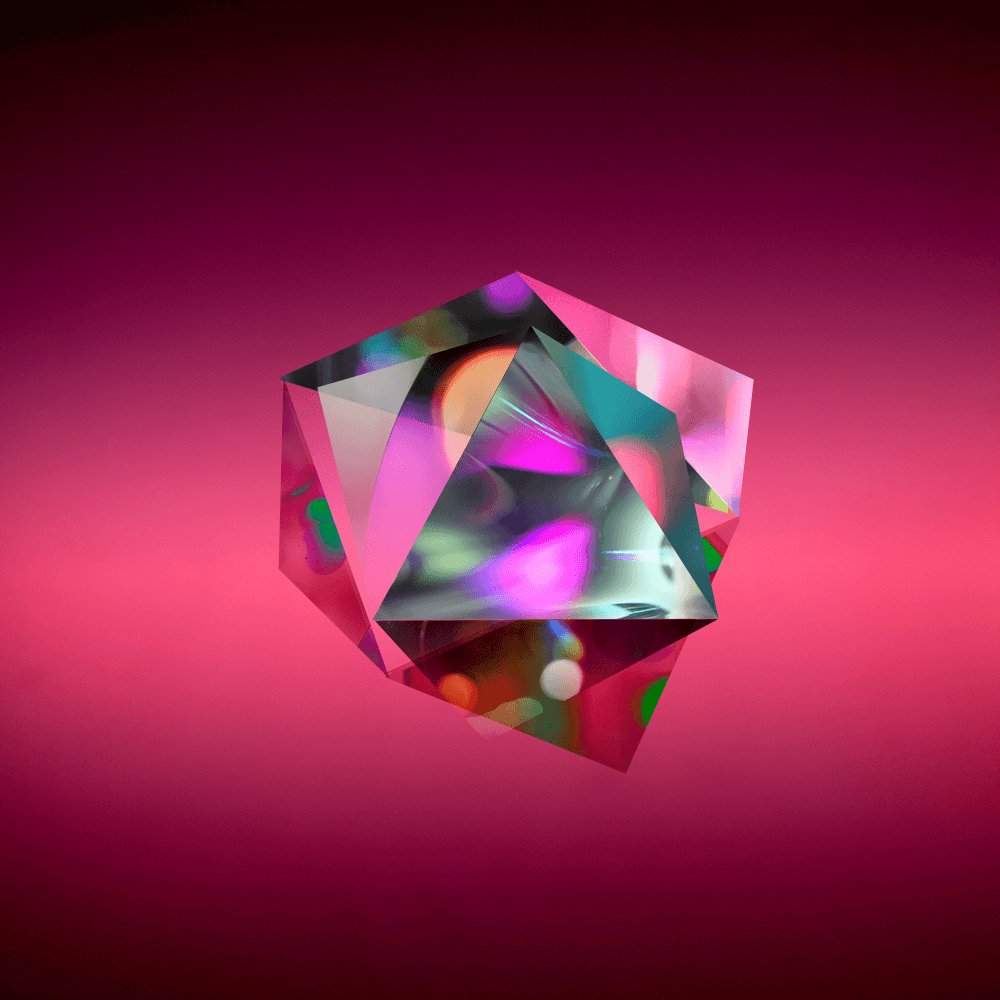
What can you tell me about Dirt Productions?
I use the term Dirt Productions to convey that I work with other technical people in the production of my work. For example both sculpture series required working with sophisticated CNC machines. Some of the joints in my shapes are cut to .001 degree of accuracy. I simply don’t have the expertise to work machines with that level of accuracy, so I work with friends/colleagues in LA to cut and assemble the final pieces. I prototype myself but collaborate to get them as close to perfect as possible. I almost got to work with Chris Burden’s shop, who after Chris died now work with other artists in technical assemblies. Thus, Dirt Productions! Some of these guys and women I’ve worked with from my advertising days, when a set or prop I needed was too technical for a general production company.
You’ve spoken about your process for your photography. What is the creative process for your sculptural works?
If you think of photography as sculpting with light there’s a natural inclination to change gears and work with three dimensional space. Light by definition is ethereal and I find it rewarding to complement image making with the materiality of sculpture. I try to design shapes that complement images, that are companions to the photographs. But in practice it allows me to use a different area of my brain. In theory I’m just borrowing from Nature again.
I view my photography as making visible what is invisible to the naked eye i.e. white light hides a myriad of colors that I extract out by using devices that split the beam into different wave lengths. The sculptures are also derived from invisible crystalline atomic structures that I make visible by enlarging and skinning in various materials. They’re both the result of making visible what is invisible to our eye but nonetheless exists in Nature.
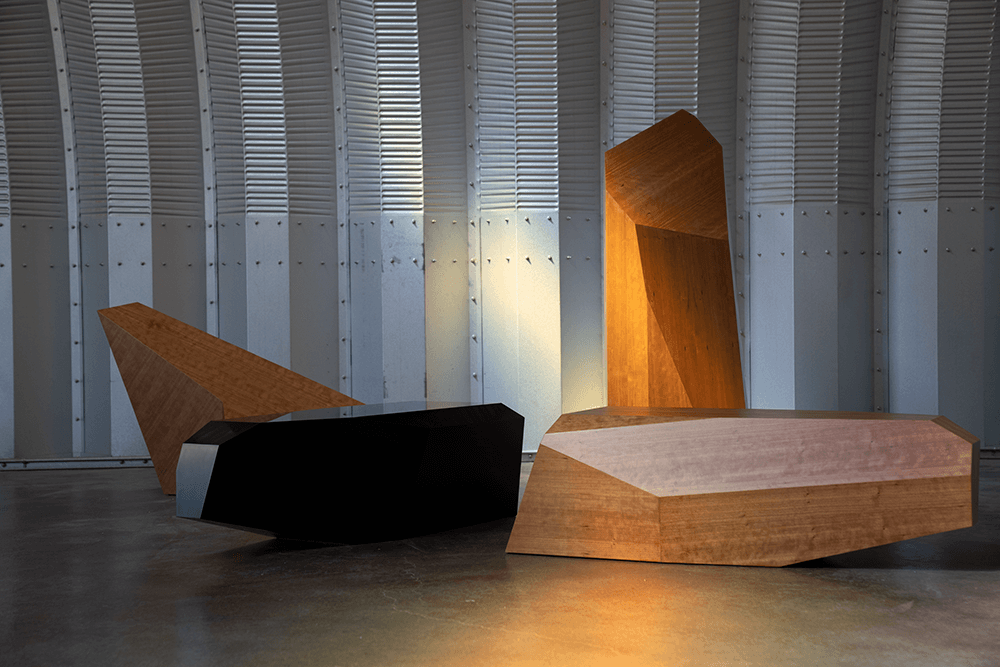
With your photographic works, you use objects like prisms, mirrors, crystals and glass to create different shapes, colors and compositions, using light to do this (Please correct me if I’m wrong). Where do you acquire them? Do you manipulate these objects at all before using them?
First, you’re entirely right in your description of my process. Where I get them is a funny story. I use devices that are designed for entirely different applications than how I employ them. I get them from suppliers of research institutes, labs, and Universities, mostly Physics departments. The specifications are so obtuse and technical that I’m forced to call their customer service representatives. I proceed to baffle the people on the other end of the line with such shockingly ignorant questions that they invariably ask, “I’m sorry, could you explain to me what you do and why you want this?” I can only imagine how appalled they are with me when I explain I’m a photographer and I’m using them for my work. Mind you, even the customer service reps are immensely qualified with graduate degrees in various fields of study not to mention the intended customers who are probably all professors. I’m like a caveman to these people who’s naively groping in the dark and with far more luck than skill making these devices provide results. I’m always a bit ashamed with myself when I order a new beam splitter or optical device.
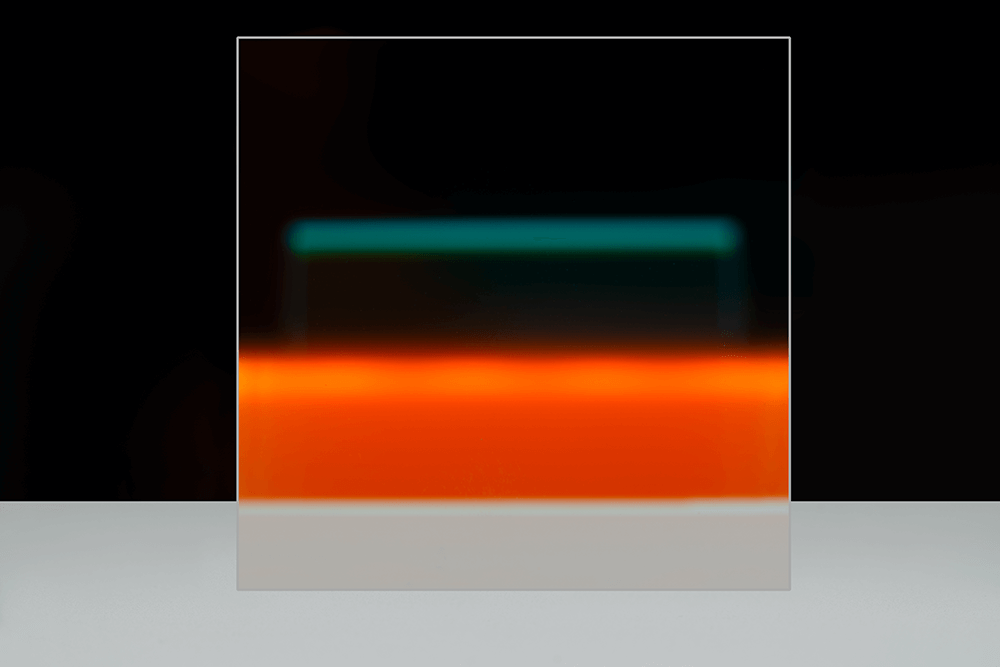
How big of a part does experimentation play in your work?
It’s entirely experimentation. Of course I go into each time with a specific outcome in mind, invariably after twenty to thirty frames I’m improvising. I should add I take anywhere from a few hundred to a thousand clicks of the shutter for any one image I print. I will spend a week or two to get one image I’m satisfied with. Because I’m basically just photographing waves of light, if I adjust the camera by a centimeter I might go from fuchsia to dark blue. I shoot tethered to a large monitor so I can see the dramatic changes that result by either moving camera angle or slight adjustments to optical devices in the field of view. In other words I’m constantly tinkering and experimenting.
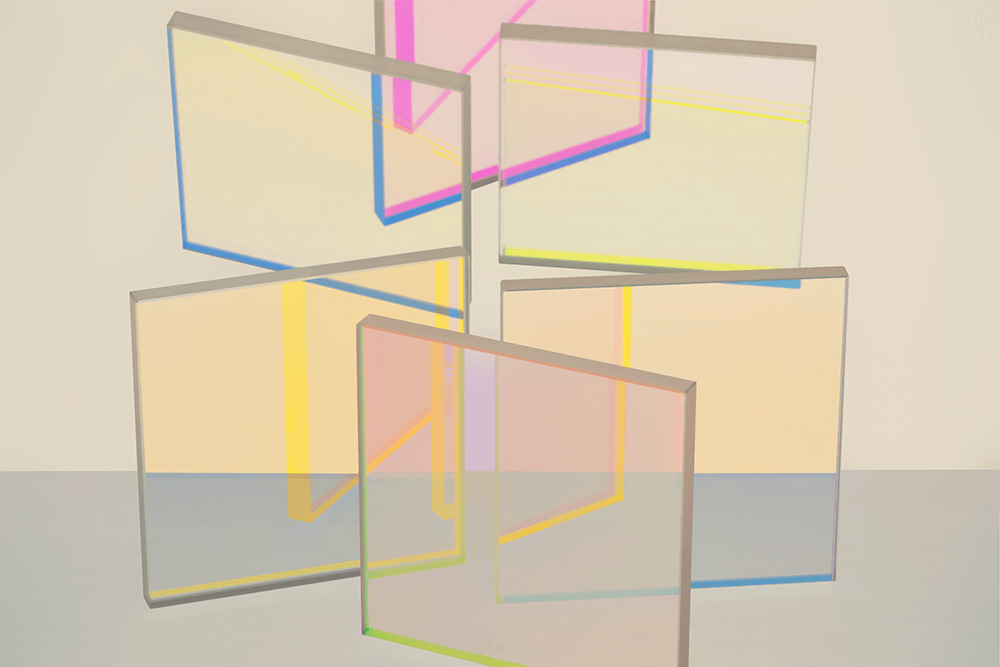
Can you talk a little bit about your experience at advertising agencies and your experience as an artist. What they share? Where they differ? Do you notice a shift in your creativity?
This is something I love to talk about because both experiences mean so much to me. I also find that they share more than they differ. The obvious distinction is that in advertising you work for the client. This isn’t always a bad thing, especially if you have a courageous client and a brand that stands for something you can get behind. And working for cool company can help you learn to remove your ego from the creative process. This has been instrumental in my creative evolution. As I mentioned before I consciously choose to distance myself from narrative, subjectivity and representation in my work. I, in fact, try to remove my own point of view from my practice as much as I’m not attempting to tell my story or project my opinions onto my work. Advertising opened that window for me – creativity doesn’t have to be a diary or a means of expressing myself, as in my self. It’s probably why I appreciate Craft so much. It’s exhilarating to witness an individual make something for sheer excellence. Of course everyone has a voice that’s unmistakable and reveled in the final product. That goes without saying. I guess I’m thinking of Anni Albers right now and many of the Bauhaus school of artists. The last distinction I’ll make is that I actually miss the collaboration and cooperation in advertising. I love working with people. The atelier model of the solitary artist toiling in their studio is not my thing. I do it, but I prefer to be part of a team or school or community. My fantasy is to have been part of Block Mountain College during its prime.
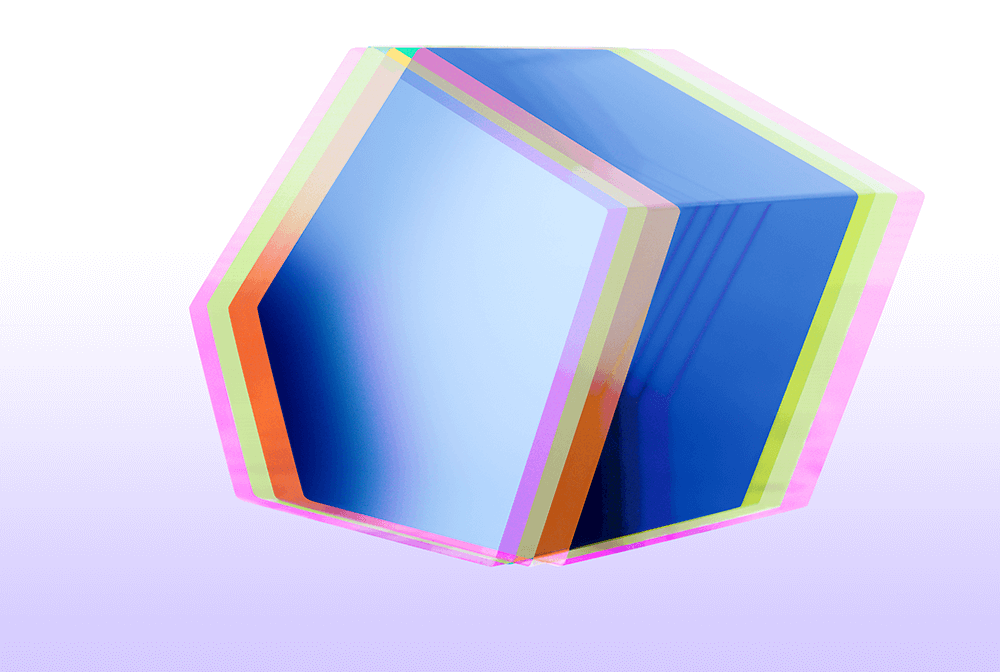
You’ve articulated that science, physics and geometry inspire your photography and sculptures. How and when did this relationship start?
It started when I realized I wasn’t the center of the universe, and I turned my attention from endless self reflection toward the world around me. You might sense a slight misanthropy in my responses, although that’s not an entirely accurate label for me. I’ve grown tired of narcissism, my own and our culture’s, celebrity, polemics, feeds, and the deafening drivel of conspiracy theories and misinformation that in the United States at least, has reached a fever pitch. I was looking for some serenity and timeless truths. Empirical, discernible proofs felt sexy to me. I’m not adverse to chaos or afraid of instability, in fact I thrive in those circumstances. But waking up to the majesty and complexity of the laws of Nature did provide my imagination and innate creativity, I believe everyone is born creative and that impulse is either suppressed or nurtured, respite and sanctuary from the babble of our current zeitgeist. I should add though that I am a consummate amateur, tourist even, in any of those scientific fields. I simply use science for my vocabulary and naively at best.
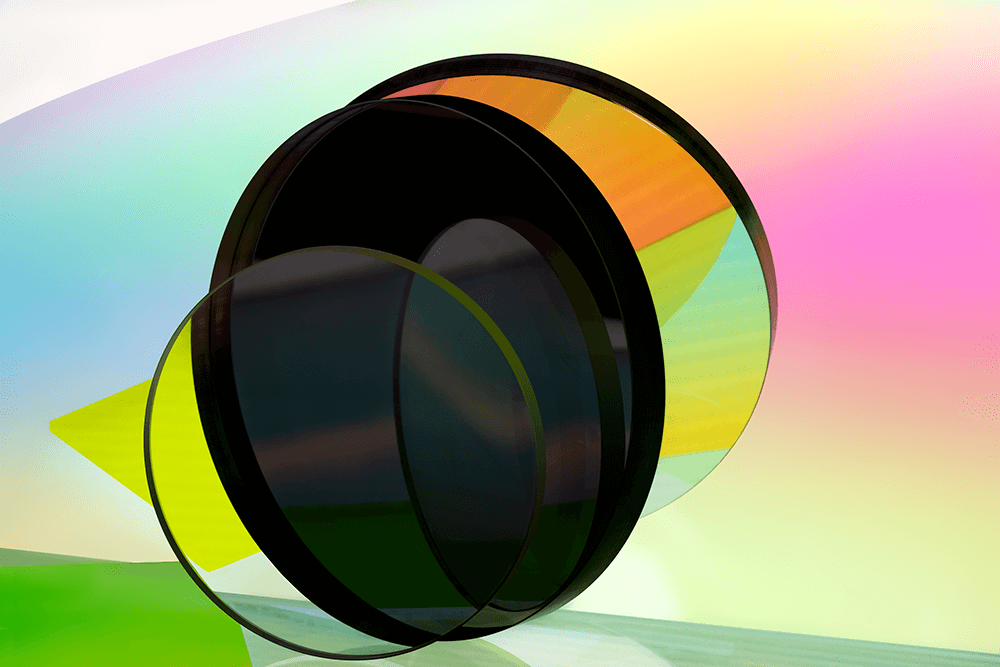
I’ve heard James Turrell say his work is self-selecting. He was of course referring to his Aten Reign at the Guggenheim which is an immersive rotunda installation that requires contemplative and inward–looking participants – “to see how they see” and study their own perception of light and space. Would you say your work is also self-selecting in this, or a similar sense?
Absolutely. He’s the godfather, enough said. I don’t think it’s reductive to say that appreciating his work is more about the wonders of optical nerves and the mystery of perception. Of course when we experience his work we’re often inclined to use words like spiritual, religious or metaphysical terms like that, but there’s also this rigorous application of geometry and physics that never gets in the way. You’re left with a profoundly personal experience though you’re together with others.
You’ve also expressed that it makes no difference what your sculptures are used for, but that they be aesthetically pleasing regardless. What makes something aesthetically pleasing for you? Is there a science to it?
That comes from my interest in interior design. I probably follow more interior designers on IG than anything else. It’s my intention that my sculptures should go in homes. I don’t mind if they’re referred to as furniture quite frankly. If I do a series I specifically make one at the height of a coffee table or side table. I love to see people’s homes, their interior design decisions and taste. I find my sculptures aesthetically pleasing, but I’d be ok with simply being interesting and a complement to all the other shapes and materials someone has chosen for a room. I look up to interior design admirably. For me, sculpture belongs in a lived environment, not necessarily in a gallery alone.
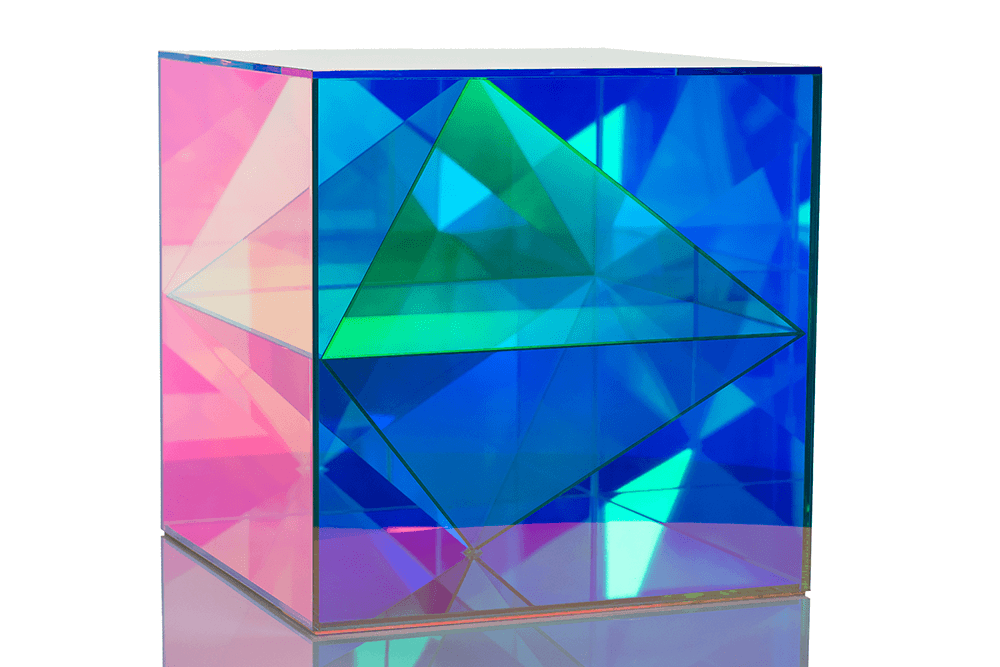
Which artists (or others) inspire you creatively?
In photography all my heroes seem to be women: Sara VanDer Beek, Barbara Kasten, Eileen Quinlan, Liz Deschenes, Michele Abeles to name a few. I think women have had the greatest impact on photography in the last 15-20 years. I have my theories but I won’t share them here. They’ve revolutionized the photographic image like never before. All those women inspire me. I’m certainly a fan of Donald Judd and Larry Bell, as well as Beverly Pepper in sculpture. I have so many inspirations. There’s no lack of talent and genius out there.
Among other things, I think your work (both photographic and sculptural) serves as a sort of palette cleanser for the average phone-scroller. There is so much pictorial stimulation that it is difficult to create inherent experiential value. Is that fair to say?
I find that a great compliment. If I can arrest someone’s attention for any amount of time and offer them an opportunity of a drama free experience and maybe even a vacation from self-consciousness, that’s a win for me.
Any new series coming up?
Yes. I’m getting into astrophotography. Our house in the mountains is getting close to completion. It sits on a cliff with a vast sky above. I plan on shooting the next series on our deck at night and map the stars. What I do augment, that is still up in the air. There might be some post production or in-camera effects. I’m not sure yet.
What advice would you give artists who might be finding it difficult to commercialize their art?
Make commercial art. I know so many artists that were dogmatic about making Fine Art until they realized they wanted to make money. And invariably they found a creative commercial pursuit that wound up being fun, rewarding, and profitable. The creative spirit is undaunted. It will mutate and transform to survive, not unlike this damn COVID.
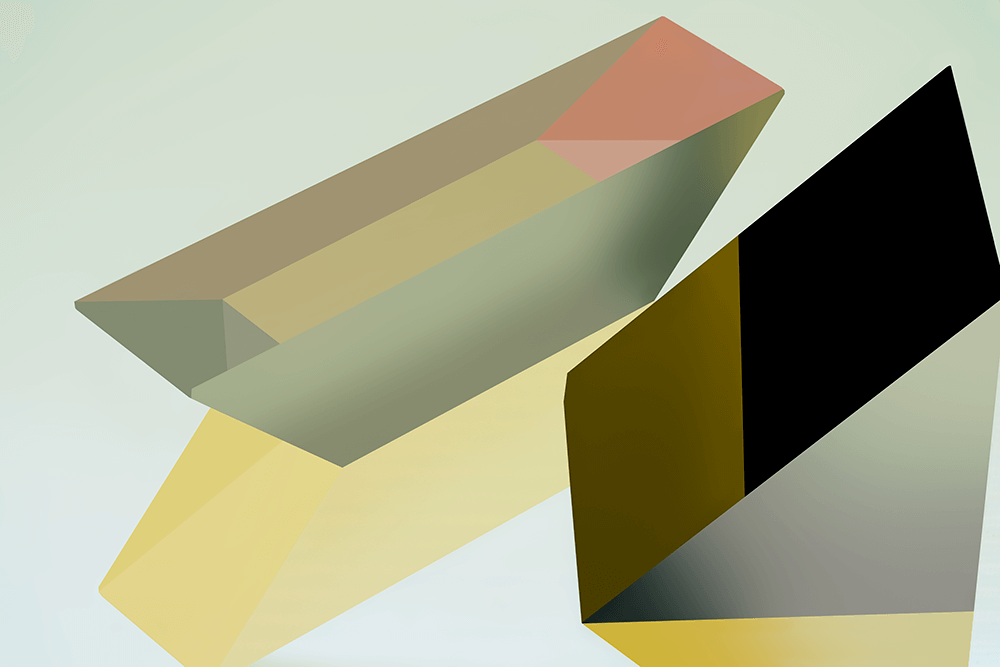
Keep up with Daniel Soder
Instagram: @daniel.soder
Website: https://danielsoder.com/







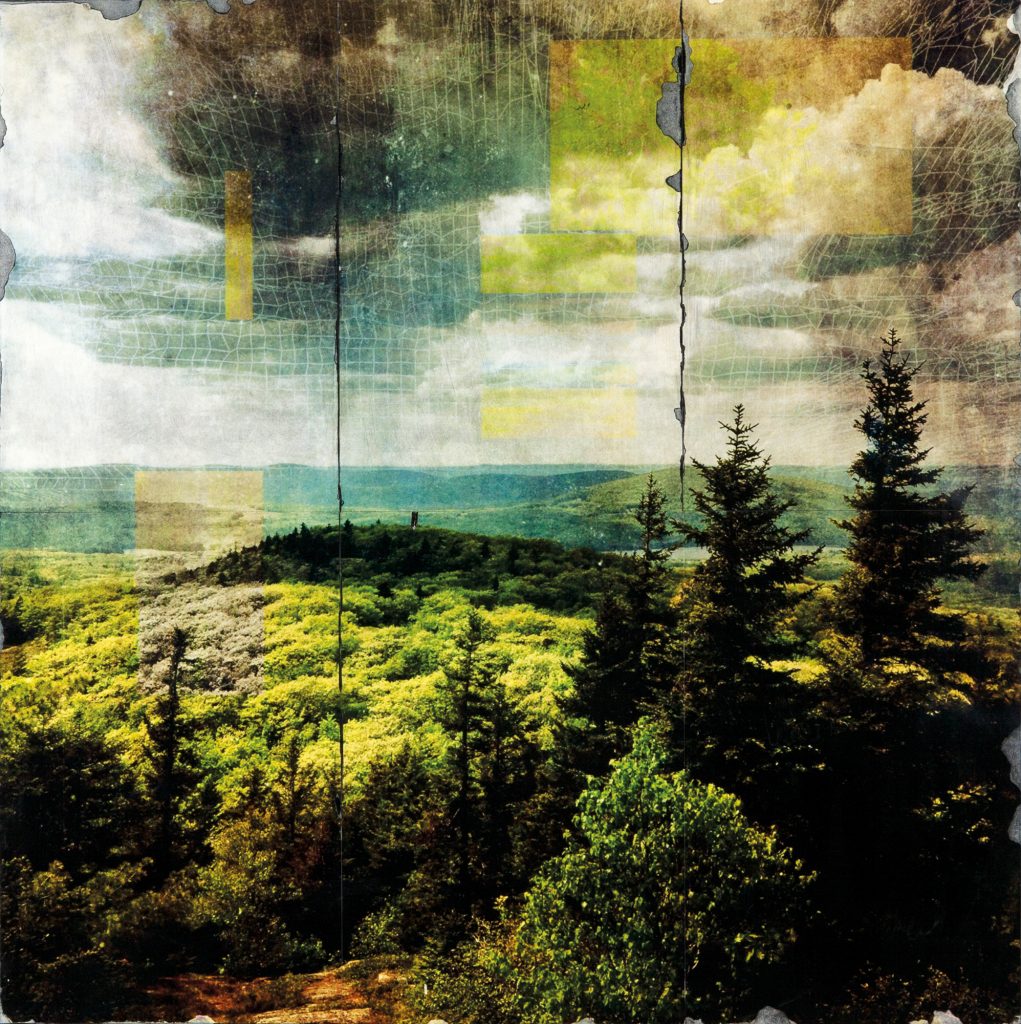

Responses